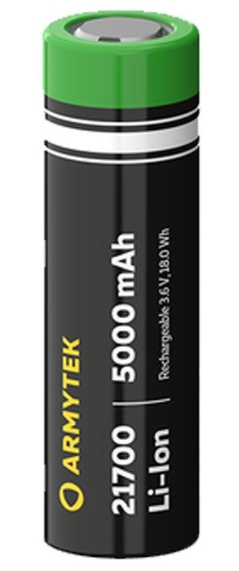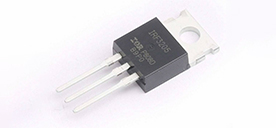18650 vs. 21700: A Comprehensive Comparison
2024/6/12 11:41:17
Views:
This article will examine the differences between 18650 and 27100 from a number of angles.
For Nanolongrange, 21700 vs. 18650
18650 versus 21700: Synopsis
18650 Overview
One kind of 18650 battery is the lithium-ion battery.
The name comes from its dimensions: 18mm x 65mm, similar to the size of an AA battery. It typically has a voltage of 3.6V and a capacity ranging from 2600mAh to 3500mAh (milliampere-hours).
21700 Overview

The dimensions of the cylindrical 21700 battery are 21 mm in diameter and 70.0 mm in height.It is known for having the best energy density and lowest cost among batteries currently available, making it cost-effective.
Comparing 18650 and 21700: Features
18650 Characteristics
- Large Capacity: 18650 batteries typically have a capacity of at least 1200mAh, with some reaching up to 3600mAh, compared to a standard battery cell which usually has a capacity of just 500mAh.
- High Energy Storage Efficiency and Stability: They can maintain full performance output at temperatures below 70°C, often equipped with a protection circuit to prevent overcharging and overheating.
- No Memory Effect: They do not require complete discharge before recharging, allowing for more convenient use.
- Elevated Power and Discharge Cycle Life: They are resistant to high temperatures and can withstand tens of thousands of cycles.
- Environmental Safeguards: 18650 batteries are non-toxic, non-polluting, and RoHS quality certified.
21700 Characteristics
- Positive Electrode Conversion to Nickel: This enhances performance and consistency, allowing for immediate use in battery packs.
- Lithium-ion Rechargeable Cell Specifications:
- Size: Diameter: 21mm, Length: 70mm
- Weight: around 65g
- Rated Voltage: 3.6V
- Standard Capacity: 4800mAh
- Internal Resistance: approximately 13 milliohms
- Charging Voltage: 4.2V
- Discharge Cut-off Voltage: 2.5V
- Discharge Current: 10A (with instantaneous discharge up to 15-20A).
18650 versus 21700: Benefits
1. Large Storage Capacity: Ranging from 1200mAh to 3600mAh, exceeding the capacity of standard batteries.
2. Prolonged Life: 18650 batteries can last over 500 charge cycles, double that of standard batteries.
3. High Voltage: With a voltage range of 3.6V to 4.2V, higher than nickel-cadmium or nickel-metal hydride batteries.
4. No Memory Effect: No need to fully discharge before recharging, making them more convenient to use.
5. Low Internal Resistance: This reduces self-consumption and increases standby life, suitable for high-discharge applications.
6. Versatile Application: Used in various devices such as notebook computers, cameras, and toys.
21700 Advantages
1. Better Energy Density: Provides more energy in a smaller volume, reducing the number of cells needed in devices and costs.
2. Increased Single Volume: Offers a 35% increase in energy compared to 18650 batteries.
3. Weight Reduction: System weight can be reduced by about 10% due to fewer batteries needed, easing system management.
These advantages make both the 18650 and 21700 batteries valuable choices for various applications, each with its unique benefits depending on the specific use case.
The specifications of 18650 and 21170
18650 vs. 21170: Final Analysis
The mAh capacity of these batteries is a crucial factor to consider. While 21700 batteries can have a capacity of up to 5000 mAh, 18650 batteries usually have a range of 2000 to 3500 mAh.
Advertisements for 18650 batteries may sometimes claim capacities of up to 9000 mAh.
mAh capacity is a crucial consideration. 18650 batteries typically range from 2000 to 3500 mAh, while 21700 batteries can range from 3000 to 5000 mAh. Some advertisements may claim capacities of up to 9000 mAh for 18650 batteries, but this should be treated with caution.
In performance, the 18650 rechargeable battery provides robust dependability and stability, while the 21700 battery boasts a notably higher performance index. The raw materials, production technology, and technological processes of the 21700 battery are more advanced than those of the 18650. In the end, the best option is determined by the particular needs of the application.
The rechargeable 18650 battery delivers robust reliability and stability, while the 21700 battery boasts a significantly superior performance index compared to its 18650 counterpart. Furthermore, compared to other battery types, the 21700 rechargeable battery's raw materials, production processes, and technological innovations are more developed than those of the 18650 rechargeable battery.
Consequently, the optimal synergy lies between the 18650 and 21700 assembly lines.
Appendix
1. Cost Considerations: While 21700 batteries offer better energy density and performance, they are generally more expensive to manufacture than 18650 batteries. This cost difference can affect the overall price of devices that use these batteries.
2. Availability and Compatibility: Compared to 21700 batteries, 18650 batteries are more readily available and have been in use for a longer period of time.This can be an important factor to consider when choosing a battery type for a specific application, especially if compatibility with existing devices is a concern.
3. Future Trends: As technology advances, it is likely that 21700 batteries will become more common and affordable, potentially replacing 18650 batteries in many applications. Keeping an eye on these trends can help in making informed decisions about battery choices for future projects.
4. Environmental Impact: Both 18650 and 21700 batteries are rechargeable, which reduces waste compared to single-use batteries. However, it's also critical to consider the environmental impact of these batteries' production and disposal when evaluating their sustainability.
5. Specific Application Examples: Providing examples of specific devices or industries where each type of battery is commonly used can help readers understand the practical implications of their differences. For instance, because of its high power output and energy density, 21700 batteries are frequently seen in electric vehicles.
Frequently Asked Questions
1. What are the physical size differences between 18650 and 21700 batteries?- Measuring 21 mm in diameter and 70 mm in length, the 21700 battery is physically larger than the 18650, which is 18 mm by 65 mm.
2. How do their capacities compare?
- Generally, 21700 batteries offer a higher capacity ranging from 3000mAh to 5000mAh, whereas 18650 batteries typically range from 2200mAh to 3600mAh.
3. How do their lifespans compare?
- Generally, 21700 batteries have a longer lifespan due to their larger size and higher energy capacity, which can endure more charge cycles before performance degrades.
4. Are 18650 and 21700 batteries more costly than one another?
- Yes, 21700 batteries tend to be more expensive, reflecting their higher capacities and performance enhancements.
5. Can 21700 batteries be used in devices designed for 18650 batteries?
- It depends on the device. While some devices can accommodate both with adjustments, others may not due to size differences and power requirements.
6. Which battery type is safer?
- Both battery types have high safety standards, but 21700 batteries often have enhanced safety features due to newer technology and higher energy densities.
7. What are the typical applications of each battery type?
- 18650 batteries are widely used in portable electronics like laptops and flashlights, whereas 21700 batteries are increasingly used in high-drain devices such as electric vehicles and larger power tools.
8. Which battery offers better performance for electric mobility?
- Because of their increased energy density and capacity to produce higher continuous discharge rates, 21700 batteries are recommended for electric mobility.
9. How does using these batteries affect the environment?
- Both batteries are recyclable, but the production and disposal processes must be carefully managed to minimize environmental impact. The choice between them does not significantly alter the overall environmental footprint if recycled properly.
Related Information
-
-
Phone
+86 135 3401 3447 -
Whatsapp





